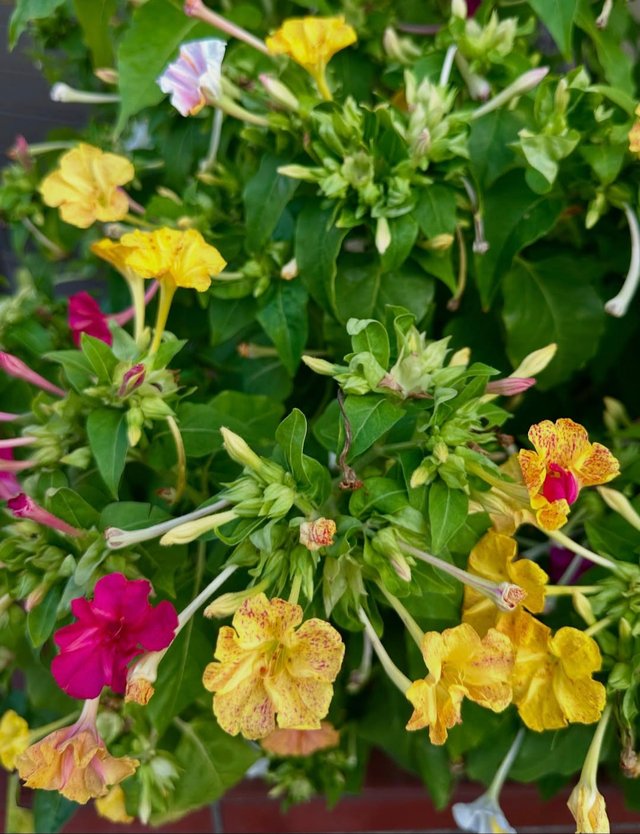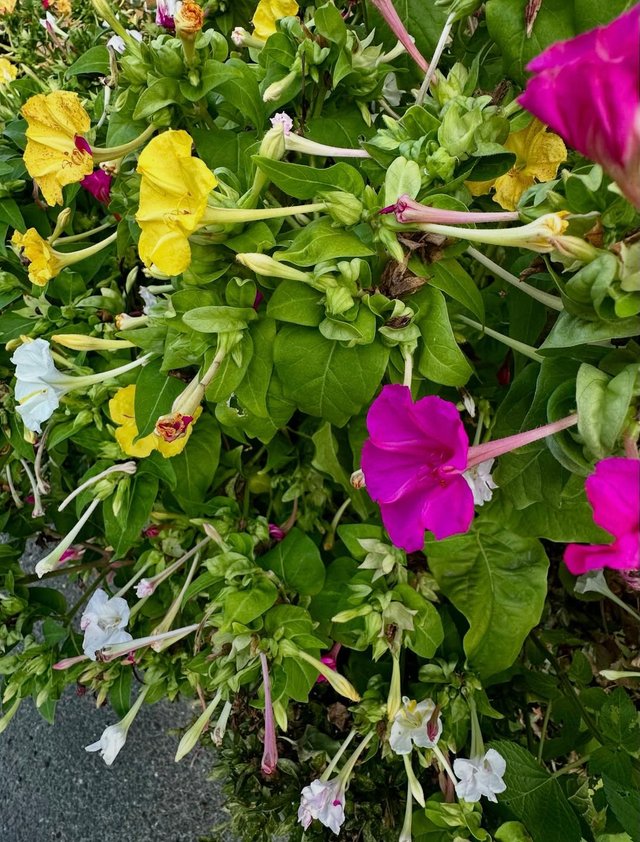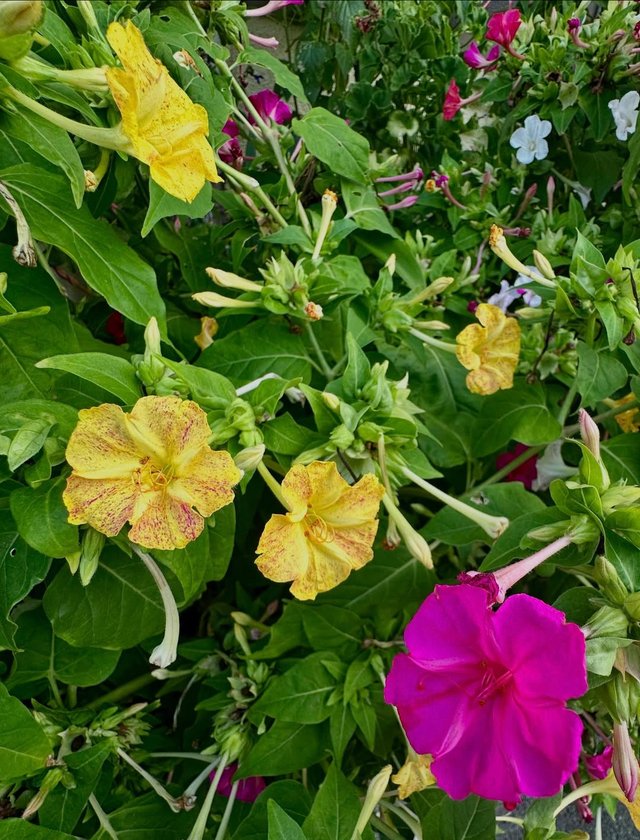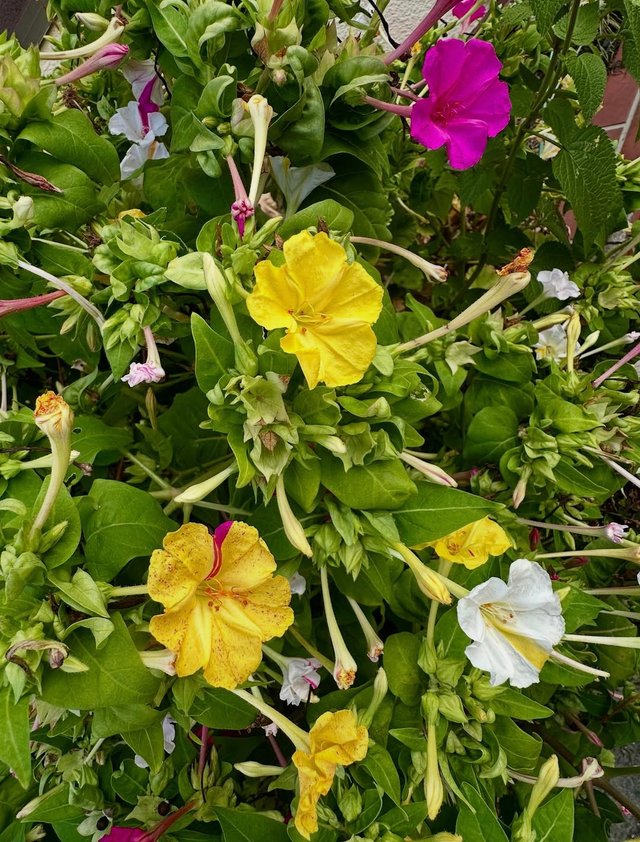Marvel-of-peru Flower
Marvel-of-Peru is a fascinating flowering plant that belongs to the family Nyctaginaceae and is admired both for its ornamental beauty and its unique botanical characteristics. It is native to tropical South America, particularly Peru, and is now cultivated worldwide in warm and temperate regions as a garden flower. The plant is a perennial in its native habitat but is often grown as an annual in cooler climates due to its sensitivity to frost. One of its most remarkable features is its flowers, which are not only vibrantly colored but also unusual in that different colored flowers can grow on the same plant, and even a single flower may display multiple colors or variegated patterns such as stripes and blotches.
The blooms open in the late afternoon or evening and remain open through the night, closing again in the morning, hence the common name “Four o’clock flower.” This nocturnal blooming habit makes it an important source of nectar for night-pollinating insects such as moths, while it also attracts hummingbirds and butterflies during twilight hours. The flowers are trumpet-shaped, around 2–2.5 inches long, and come in colors ranging from yellow, pink, red, white, and magenta to striking bi-colored combinations. The fragrance of the blossoms is another notable trait, often described as sweet and pleasant, making them a favored addition to night gardens.
The plant itself grows as a bushy, herbaceous shrub that can reach up to 2–3 feet in height, with branching stems and lush, ovate green leaves. Marvel-of-Peru reproduces through both seeds and tuberous roots. The tubers, which resemble small, darkened carrots, allow the plant to survive droughts and regrow in favorable conditions, while the seeds are small, black, and rounded, dispersing easily for new growth. In many regions, particularly where winters are mild, these tubers allow the plant to persist for several years, making it effectively perennial.




